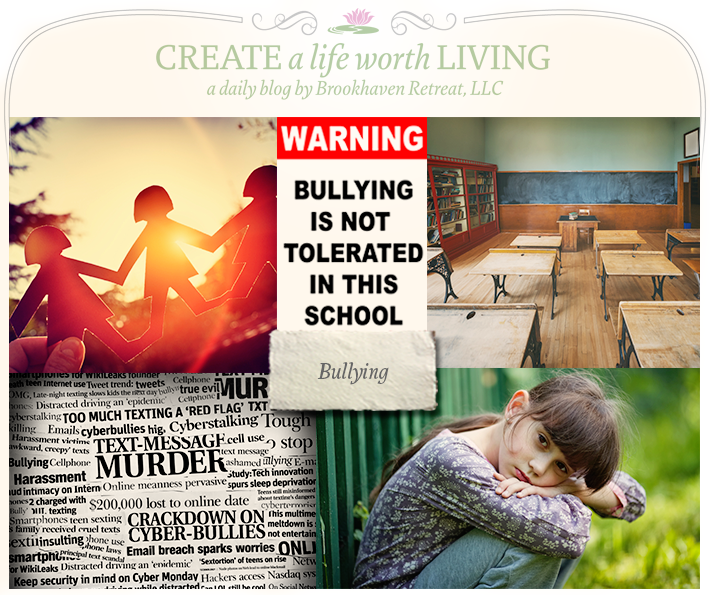
At the start of 4th grade, my son started a new school due to a move. I wasn’t really worried. He had played basketball from 1st-3rd grades so I knew he would know some of the other kids. He was a likeable kid who always made friends easily.
I should have known something was wrong. He was missing way too much school. He was never one that liked to miss. He was afraid he would miss out on something. But as the new school year began, his frequent misses were now averaging a couple days a week. He would be fine and then when I pulled up to drop him off at school, he would complain and sometime even cry that he felt bad. It was a struggle not to lose my cool, but I did not understand. We knew his teacher. His older brother had had her at his other school. Many of the staff were acquainted with family members. We even had a good family friend who worked in the cafeteria.
One afternoon, having missed yet again, I confronted him. Why did he not want to go to school? Did he not realize that his father and I were going to end up in truancy court because we allowed him to miss? Something finally gave way, and he opened up. One of the boys in his class was bullying him. He was taking his lunch. He was telling him things like ‘if he made the starting line-up for basketball he would be sorry’ and a number of other things. This kid had even physically punched him in the back during gym class. My son was the victim of a bully.
My heart went out to him. Between wanting to comfort and reassure him, I wanted to grab the other kid up by his neck and hang him from the nearest tree. But I remained calm only for my son’s sake. I told my son this was totally unacceptable and it was ending, TODAY. I then called the principal of the school. I explained that over the past 6-7 weeks of school that “yes” my son had missed a great deal of school and went on to tell her that he had just told me one of the kids in his class was bullying him. The principal reassured me that she would take care of it-starting NOW.
My son was a little hesitant about returning to school the next day. My husband and I both escorted him into the school that morning. We met with the principal who told my son that he had done nothing wrong and that it would be okay. And it was.
A few days later, the grandfather and mother of the “so-called bully” approached my husband and apologized to both him and my son. Apparently, my son was not his only victim. The other boy, I was told, has a lot of behavioral problems. Whatever his problem, it is totally unacceptable.
Until then, I was aware of bullying, but not really. I knew it went on around us, but my kids got along with everyone. And though my son’s case was not as severe as some of the other cases, it was still serious.
Bullying has always been a problem in schools, but in the past several years, the seriousness of it has leaped to new bounds. According to the National Center for Educational Statistics, in 2013 nearly 1 in 3 students (or 27.8%) reported being bullied during the school year. ABC News reported that 160,000 students miss school every day because of fear of bullied.*
And according to the Center of Disease Control’s 2012 findings, students who experience bullying are at risk for depression, anxiety, sleep difficulties, and poor school adjustment. www.nobullying.com/bullying-suicide/ finds that “there is a strong link between bullying and suicides. In the last few years a string of suicides in the US and around the world has called attention to this problem. It happens in both boys and girls.” It can be either person-to person or cyber bullying.
So how do we stop “bullying”? Addressing the problem before it starts.
- Assess how it occurs, where it happens, how to intervene and then re-assess.
- Engage students, staff, teachers, parents and the community.
- Create policies and rules: ex: zero-tolerance
- Build a safe environment. Meetings, newsletters, website, student handbook, etc.
- Continue to educate.
- For more information, please go to www.stopbullying.gov/prevention.
*ABC News, Sue Donaldson James, “Teen Commits Suicide Due to Bullying: Parents Sue School for Son’s Death”. April 2, 2009.
